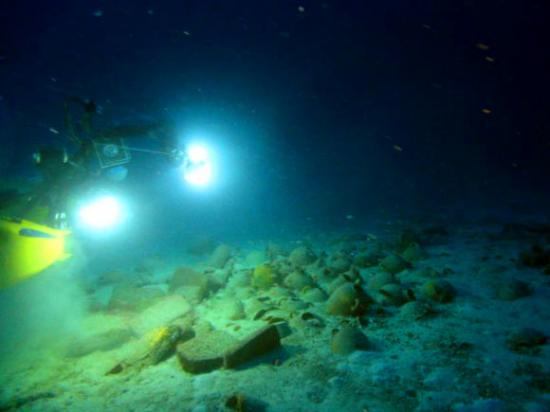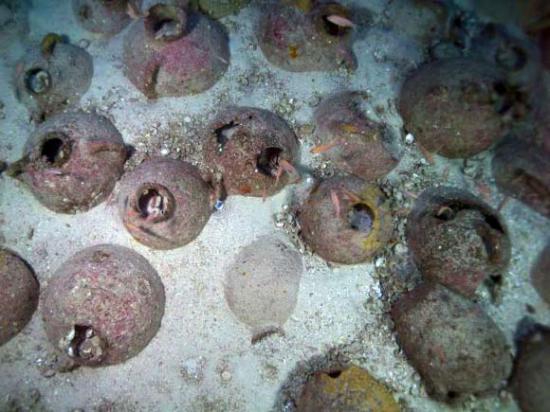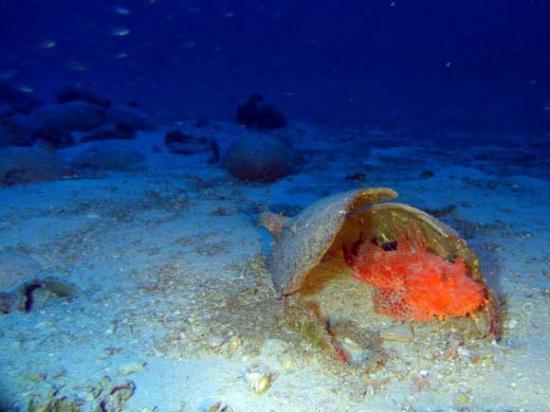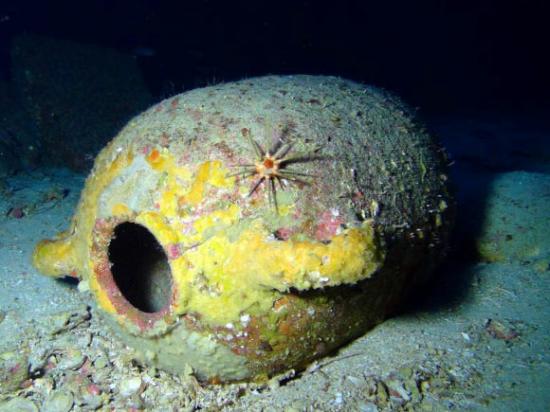Source - http://www.sci-news.com/archaeology/science-phoenician-shipwreck-malta-02118.html
Underwater archaeologists from the Groplan project, led by Dr Timmy Gambin of the University of Malta, say they have discovered the remains of a sunken Phoenician merchant vessel in the waters off the Maltese island of Gozo.

The site of a 2,700-year-old Phoenician shipwreck. Image credit: © Groplan project / Timmy Gambin, University of Malta.
The Phoenicians – the direct descendents of the Canaanites of the south Syrian and Lebanese coast – were a great maritime people who had developed a high level of ship-building technology.
They used galleys, or man-powered vessels, and are credited with the invention of the bireme (galley with two decks of oars).

A rich amphorae field at the wreck site. Image credit: © Groplan project / Timmy Gambin, University of Malta.
The Phoenicians established trading colonies all around the Mediterranean, Babylon, in North Africa, the Italian peninsula, Sicily and Corsica.
Phoenicia thrived as a maritime trader and manufacturing center from 1550 to c. 500 BC when the main territory was conquered by the Persian king Cyrus the Great.

Amphorae at the wreck site. Image credit: © Groplan project / Timmy Gambin, University of Malta.
According to Dr Gambin and his colleagues from Texas A&M University and the French National Research Agency, the Phoenician shipwreck they discovered at a depth of 125 meters dates to around 700 BC.
“This shipwreck may offer new and significant information about Phoenician seafaring and trade in the central Mediterranean during the archaic period. To date, little is known about the earliest contact of Phoenician mariners with the Maltese islands,” Dr Gambin said in a statement.

An amphora at the wreck site. Image credit: © Groplan project / Timmy Gambin, University of Malta.
The scientists believe that the Phoenician vessel was sailing from Sicily to Malta when it sank.
It was about 15 meters long and carried a cargo of 20 grinding stones (about 35 kg each) and 50 amphorae of seven different types – indicating the ship had been in different harbors.

Grinding stones. Image credit: © Groplan project / Timmy Gambin, University of Malta.
Dr Gambin said: “this discovery may be considered as one of the best-preserved archaeological sites in Malta datable to the early Phoenician period.”